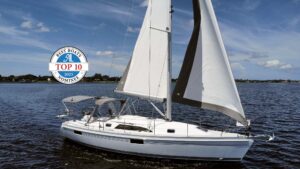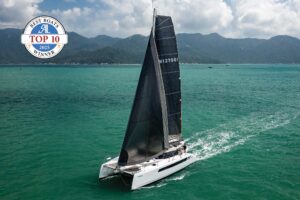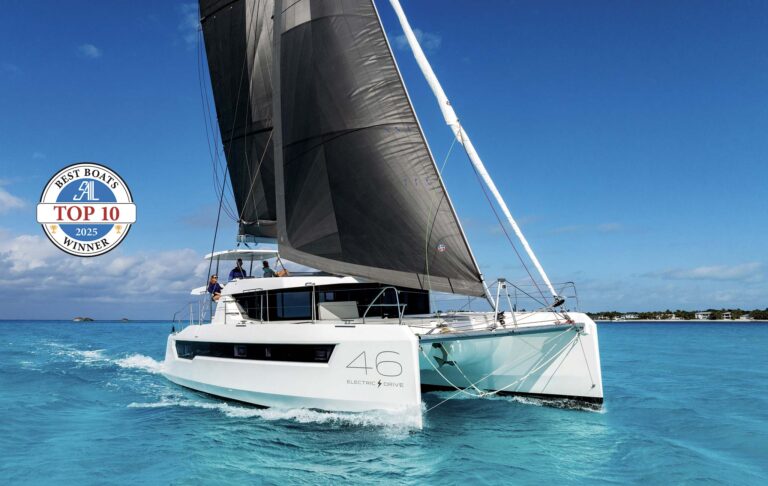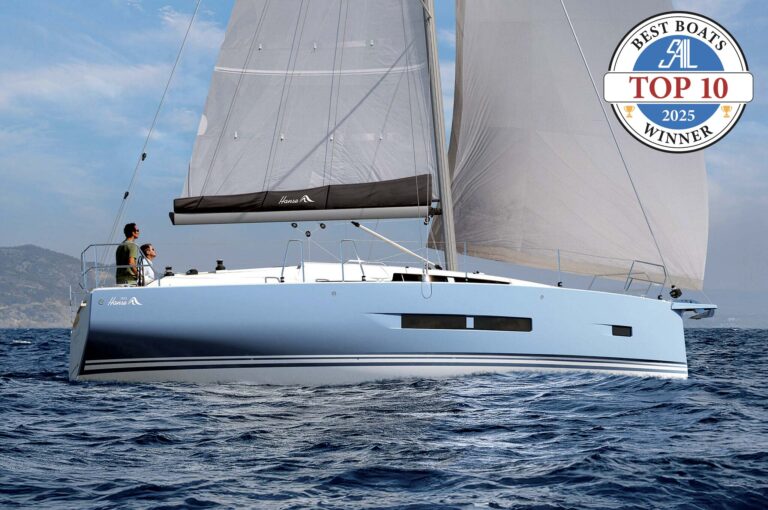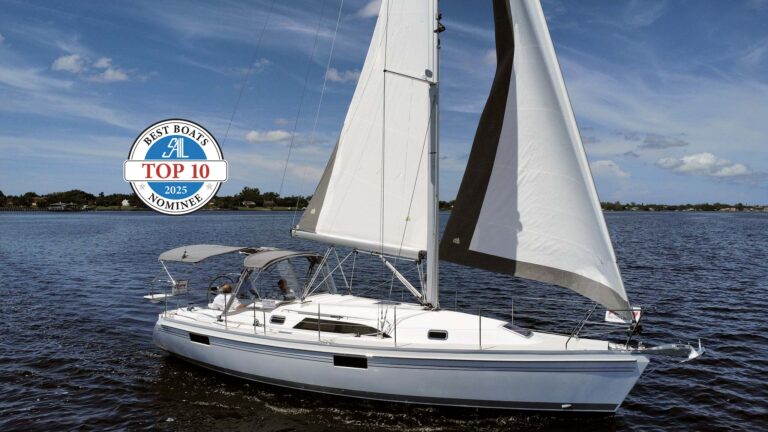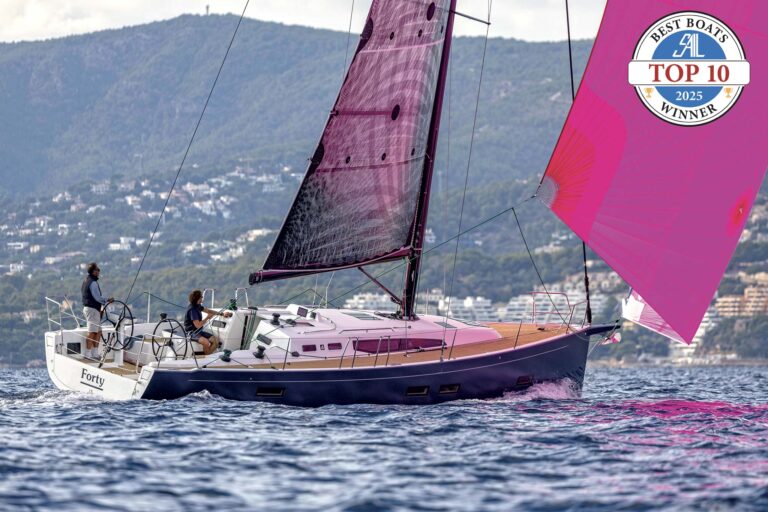
Even before they joined forces with Beneteau back in 2018, Seascape’s Slovenian principals, Andraž Mihelin and Kristian Hajnšek, were brainstorming with their go-to French designer, Sam Manuard, on how to create a truly multipurpose 36-foot performance boat. Their goal was to build a boat that would broaden the base of sailing—a boat for those who want an aggressive but easy-to-manage club racer, for those who want to get into the rapidly growing shorthanded distance racing game, and for those who simply want to go cruising on a vessel that is fast and fun to sail.
Once Beneteau was aboard they conducted some detailed market research and learned: 1) their boat should plane easily; 2) it should have a salon for lounging, not dining; 3) it should have a real nav desk; and 4) a comfortable forward berth is more important than a big head.
The new Beneteau First 36 that debuted at Annapolis last fall checks all these boxes, and more. Enough that we here at SAIL happily anointed it one of our 2023 Top 10 Best Boats winners.
This is a remarkably versatile craft. For a mass-production boat, it is quite light but also very strong, with a purely race-boat-quality build regimen. The entire boat is foam-cored and vacuum-infused—not just the hull and deck, but the bulkheads and furniture as well, which together with an expansive keel grid that reaches right up to deck level, are all integral parts of the structure. Yet the interior is not at all antiseptic and has enough wood and fabric showing to seem both comfortable and humane.

Inspecting the boat dockside, I was particularly impressed by the flexible accommodation scheme. Right aft there are generous twin staterooms that can be easily configured with single or double berths or as simple storage spaces. The galley features a stand-alone fridge island, just forward of the companionway. This makes a great brace point coming below in the bumpy stuff, can provide easy-access beverages for a boisterous crew, and can be bridged to the galley proper when preparing food with a clever removable cutting board/counter section. The salon is purely functional, with a centerline folding-leaf table and full-length straight settees. Up forward you’ll find a full-size double berth and a small but surprisingly usable head space. And yes, there is a nav station.
The cockpit likewise is carefully thought out. The twin wheels turning twin rudders are both tall enough and small enough that a helmsperson can easily skooch around them to manage the twin winches controlling the mainsail, which sheets to a proper full-breadth traveler on the cockpit sole. The wheel pedestals also feature discrete but handy grab bars, something lacking on many contemporary boats. The working pit forward of the traveler, meanwhile, is a model of efficiency. The primary winches are perfectly elevated and canted so they are easy to manage both standing and seated. All working lines can be cross-sheeted to windward when desired. The hardware is a carefully selected mix of Ronstan, Harken, Spinlock, and Antal kit. And when it’s time to go cruising, a proper cockpit table and modular storage units that lengthen the cockpit seats can be quickly installed.
My test boat was equipped with the standard rig and rags—an aluminum boom and 9/10ths fractional double-spreader aluminum mast from Z-Spars, plus NPL Tour laminated sails from North. (A carbon-fiber rig from Axxon is optional.) The standing rigging is Dyform wire, except for the backstay, which is fiber and highly adjustable. Up front I was amazed to find four different tack points (two on deck and two on the bowsprit) and a veritable forest of halyards for headsails—two for both masthead and fractional A-sails or gennakers; two jib halyards to facilitate sail changes; a two-part Code 0 halyard; and a two-part staysail halyard. All of them were neatly segregated and organized.

According to the literature, the First 36 starts planing in a moderate true breeze of just 12 or more knots. Alas, we saw only 8-10 when I ventured out on to Chesapeake Bay with my effervescent host Tit Plevnik, but still I was impressed with how the boat handled. The helm feel was excellent—silky smooth, positive, and very responsive. With an A-sail flying, making nearly 10 knots while reaching, I could feel the hull getting lighter as it aspired to climb out of the water.
Switching to the 105% jib for some windward work, I found we could pinch inside a 30-degree apparent wind angle and still make 6 knots. Fully powered up at around 35 degrees, we were a full knot faster. And on an open close reach we were doing 8-9 knots.
As it was, after an hour on the water, I was not at all skeptical when Tit advised he’d hit 18 knots sailing the boat in gusty conditions just a day earlier.
I dare you to buy one and try that at home.
LOA/LOD 39’ 4”; 36’ 1”
LWL 33’ 8”
Beam 12’ 6”
Draft 7’ 5”
Displacement 10,580 lbs
Ballast 3,420 lbs (cast iron)
Sail area (upwind) 861 sq ft
Power Yanmar diesel 29-hp w/saildrive
Designer Sam Manuard
Builder Beneteau/Seascape (Slovenia) beneteau.com
Price as tested $345K
August/September 2023

